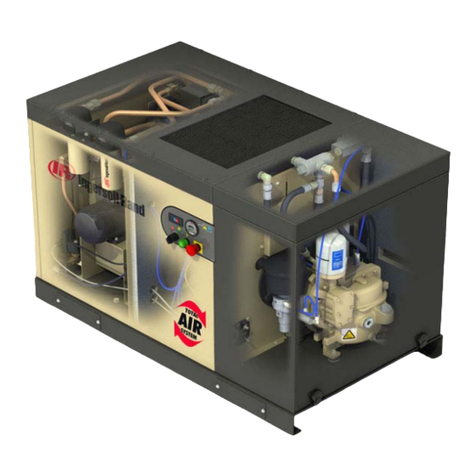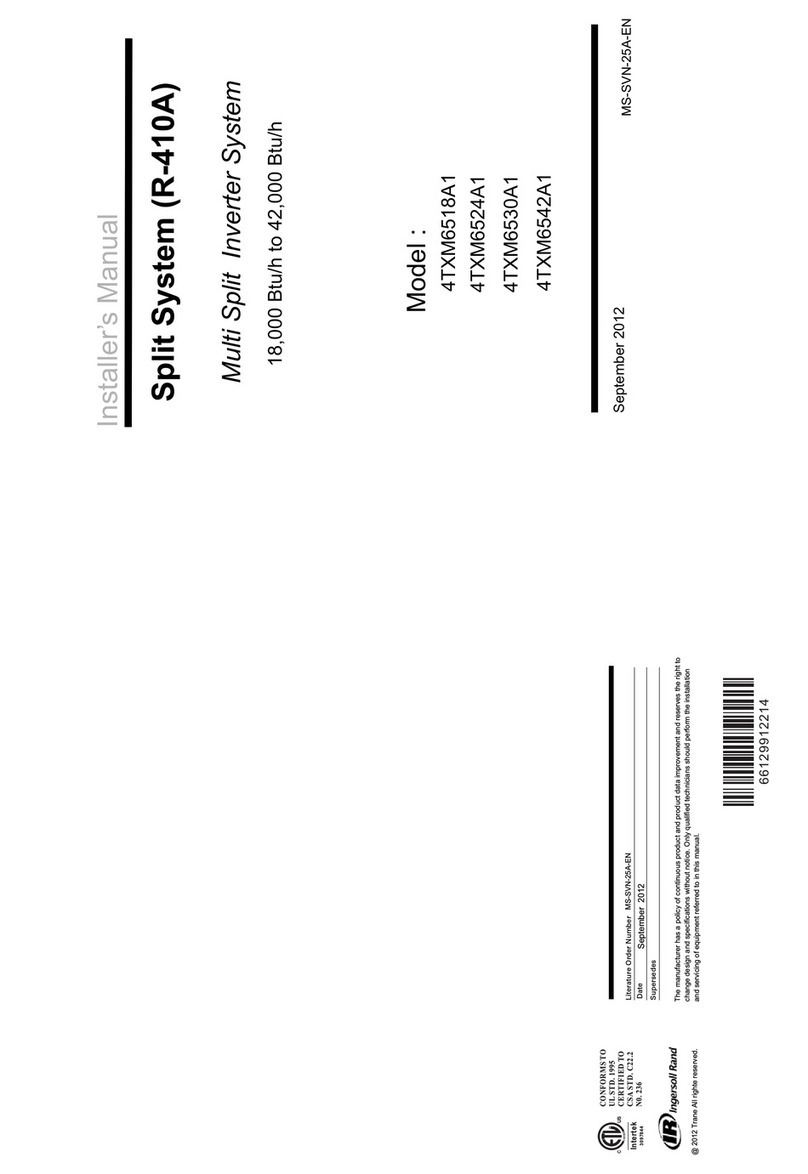
Content
Security cautions ....................................................................................................................... 5
Pre-installation list ..................................................................................................................... 6
Typical installation...................................................................................................................... 7
Names and functionality of each part ........................................................................................ 7
Required clearances.................................................................................................................. 8
Requirements for connecting lines ............................................................................................ 9
Warnings for refrigerant lines .................................................................................................. 10
Nitrogen purge during brazing................................................................................................. 10
Installation location.................................................................................................................. 11
Indoor unit installation.............................................................................................................. 12
Mounting location .................................................................................................................... 12
Hole boring for piping installation ............................................................................................ 13
Indoor unit refrigerant piping ................................................................................................... 13
Condensate piping installation................................................................................................. 15
Indoor unit wiring ..................................................................................................................... 15
Piping and wiring bundling....................................................................................................... 17
Indoor unit hanging.................................................................................................................. 17
Outdoor unit installation........................................................................................................... 18
Condensate draining ............................................................................................................... 18
Refrigerant piping installation .................................................................................................. 19
Piping flaring and bending procedure...................................................................................... 19
Outdoor unit refrigerant piping................................................................................................. 20
Piping joints insulation............................................................................................................. 20
Piping requirements................................................................................................................. 21
Vacuum and refrigerant leak detection ................................................................................... 22
Wiring warnings....................................................................................................................... 23
Outdoor wiring connections..................................................................................................... 23
Stranded wiring connections ................................................................................................... 24
Electrical connections.............................................................................................................. 25
Wiring specifications................................................................................................................ 26
Grounding................................................................................................................................ 26
Controller installation............................................................................................................... 26
Lista verificadora de la instalación.......................................................................................... 27
Prueba de operación ............................................................................................................... 27
Refrigerant system diagrams................................................................................................... 28
Wiring diagrams....................................................................................................................... 29
Unit dimensions....................................................................................................................... 32
Common error codes............................................................................................................... 36
Emergency operation .............................................................................................................. 36
Trouble shooting ...................................................................................................................... 37
Indoor unit maintenance.......................................................................................................... 38
General maintenance .............................................................................................................. 39





























